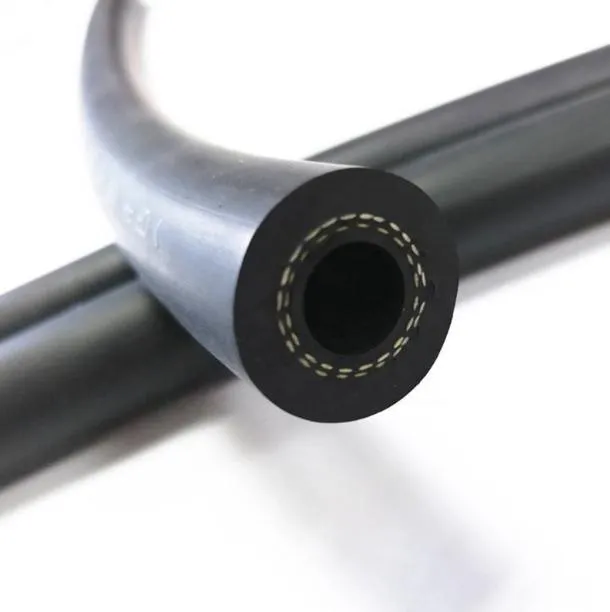Jul . 02, 2025 11:35 Back to list
Enhancing Vehicle Efficiency with High-Performance Automotive Hoses
Understanding the Role of Automotive Hose Technology
Modern vehicle climate control systems rely heavily on the performance of high-quality hoses. Among these, automotive hose solutions play a critical role in transporting refrigerants efficiently within a car’s air conditioning (A/C) system. These hoses must withstand varying pressures, temperatures, and exposure to chemicals, making durability and reliability key priorities in their design and manufacturing. With rising expectations for energy efficiency and environmental compliance, advanced hose structures like 7 layers A/C hose and 5 layers A/C hose have become industry standards.

Layered Engineering: A Closer Look at 7 Layers A/C Hose
The 7 layers A/C hose represents a significant advancement in hose technology, offering multi-tier protection and enhanced performance. Each layer within the hose has a distinct function. The innermost layer is typically made of EPDM rubber, known for its excellent resistance to ozone and refrigerants, safeguarding the hose from internal degradation. Following this is a barrier layer that minimizes refrigerant loss, which is critical for maintaining system efficiency.
Next are alternating buffer and reinforcement layers. The buffer layers absorb pressure fluctuations and protect against vibration, while the reinforcement layers—often textile or synthetic braid—add tensile strength and durability. The outermost layer protects against external abrasion, UV rays, and chemical exposure. This seven-layer structure ensures the hose remains leak-proof, flexible, and resilient, making it ideal for long-term A/C system use in passenger and commercial vehicles alike.
Single Braid Simplicity: The Advantages of 5 Layers A/C Hose
In contrast, the 5 layers A/C hose—often referred to as Type C A/C hose—offers a lighter and more flexible alternative. This hose design is widely used in standard automotive applications, providing sufficient strength while maintaining ease of installation and cost-effectiveness. The five layers generally include an EPDM inner tube, a barrier layer to prevent refrigerant permeation, a buffer layer, a textile braid reinforcement, and a weather-resistant outer cover.
The 5 layers A/C hose is compatible with commonly used refrigerants like R12 and R134a and meets the SAE J2064 performance standards. Its operating temperature range spans from -40°C to +135°C (-40°F to +275°F), making it reliable across a wide range of climates and vehicle types. Despite having fewer layers than its 7-layer counterpart, this hose still offers dependable performance for everyday automotive cooling systems.
Precision Fit for Modern Systems: Exploring Type E and Type C Hoses
When it comes to specialized configurations, both Type E A/C hose and Type C A/C hose stand out for their precision fit and performance reliability. Type C A/C hose is typically used in applications requiring lightweight and flexible tubing, while Type E A/C hose incorporates additional reinforcement to withstand higher pressures. These types ensure compatibility with modern vehicle architectures that demand compact routing and increased mechanical endurance.
Manufacturers design these hoses to be bend-resistant while retaining sufficient flexibility to allow tight installations in space-constrained engine compartments. Their compatibility with a broad spectrum of refrigerants further adds to their adaptability, making them a go-to choice for both original equipment manufacturers and aftermarket service providers.
Reliability and Longevity in Automotive Hose Systems
For a vehicle’s A/C system to function efficiently throughout its lifespan, the quality of the hose system cannot be compromised. Premium automotive hose solutions like 7 layers A/C hose and 5 layers A/C hose are designed with this in mind. Proper selection ensures not only compatibility with refrigerants and operating conditions but also reduces the risk of leaks, ruptures, and efficiency losses.
As environmental regulations tighten and consumer expectations increase, car manufacturers and service centers are turning to advanced hose technologies that balance performance, flexibility, and cost. The market demand for reliable, high-performance hoses has made them an essential component in automotive engineering and maintenance.
Automotive hose FAQs
What are the advantages of using a 7 layers A/C hose in an automotive hose system?
The 7 layers A/C hose offers superior protection, pressure resistance, and reduced refrigerant loss due to its complex layered structure, making it ideal for demanding automotive environments.
How does a 5 layers A/C hose differ from a Type C A/C hose?
They are often the same; 5 layers A/C hose is typically known as Type C A/C hose, known for being lightweight and flexible while meeting standard performance needs.
What makes Type E A/C hose suitable for high-pressure applications?
The Type E A/C hose features enhanced reinforcement layers that help it endure higher operating pressures without sacrificing flexibility.
Why choose an automotive hose with multiple layers?
Multi-layered automotive hose systems provide improved durability, reduced leakage, and better performance, especially when used with modern refrigerants.
Are these hoses compatible with all refrigerants used in automotive air conditioning systems?
Yes, most high-quality automotive hose products are compatible with R12, R134a, and other modern refrigerants, ensuring reliable performance and regulatory compliance.
-
Thermoplastic Hose Chemical Resistance Fluid Compatibility
NewsJul.14,2025
-
Steel Wire Braid Hydraulic Hose Factory Production Process
NewsJul.14,2025
-
SAE Hydraulic Hose Specs Textile Reinforcement Layer Structure
NewsJul.14,2025
-
High Pressure Hydraulic Hose Factory CNC Bending Process
NewsJul.14,2025
-
China Wire Spiral Hydraulic Hose High Temperature Resistance
NewsJul.14,2025
-
Automotive Air Conditioning Hose Ozone Resistance Testing
NewsJul.14,2025
